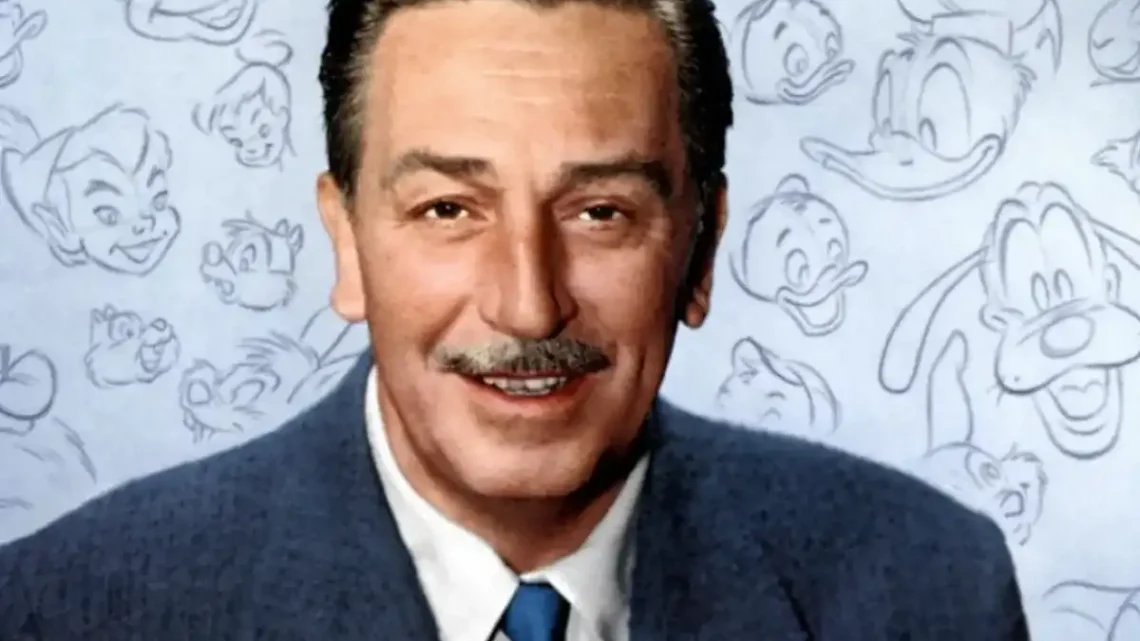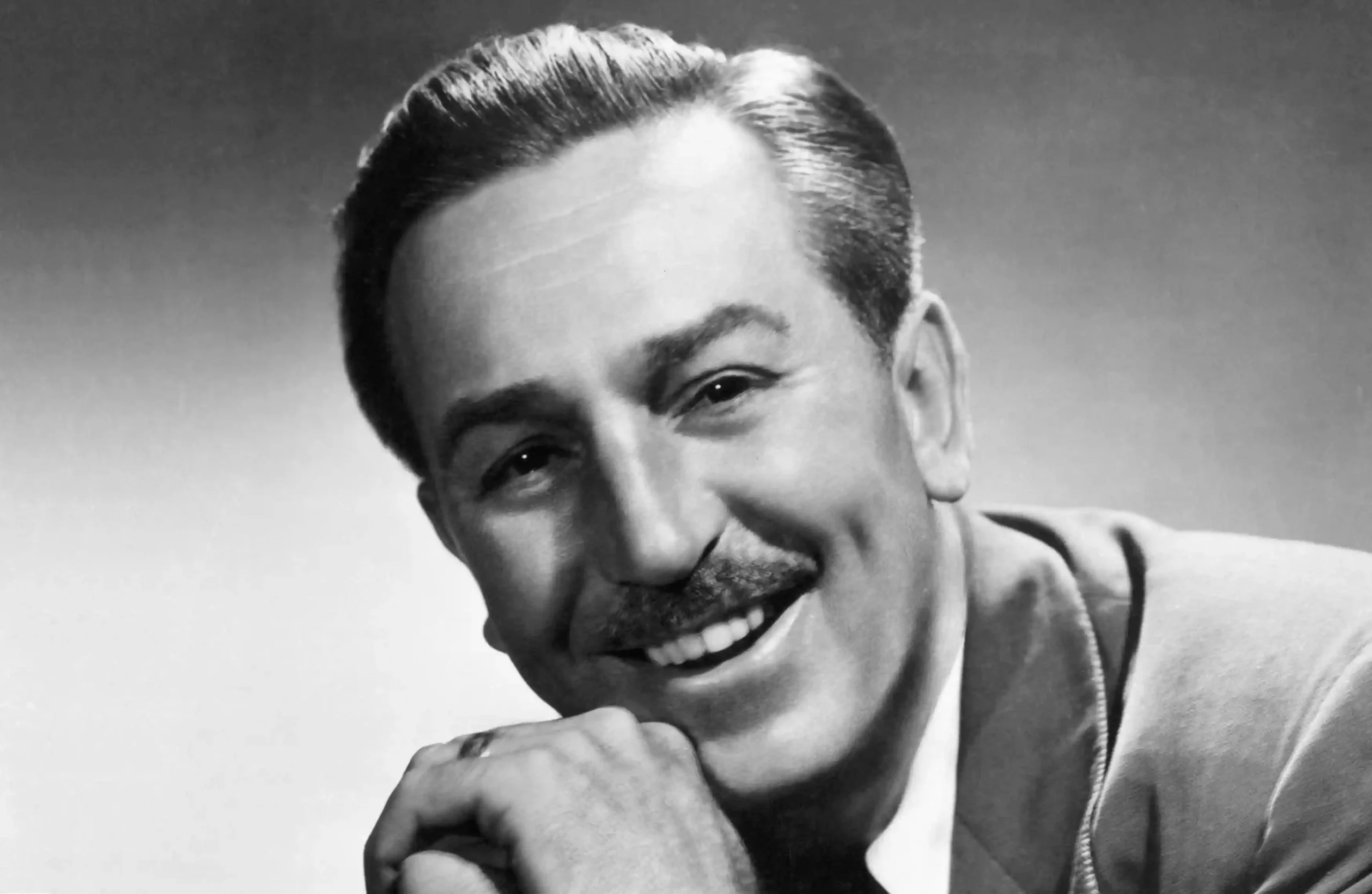
Walt Disney Bio: Age, Wife, Children, Net Worth, Company, Height, Parents, Religion, Real Name, Movies
Biography
Walter Elias Disney (December 5, 1901 – December 15, 1966), also known as Walt Disney, was a prominent American animator, film producer, voice actor, and entrepreneur.
Born in Chicago, Illinois, he developed an early interest in drawing and began his career as a commercial illustrator before co-founding the Disney Brothers Studio with his brother Roy in 1923.
Trending Now!!:
Disney pioneered synchronized sound in animation with Steamboat Willie (1928), introducing Mickey Mouse to the world. He went on to create iconic characters including Minnie Mouse, Donald Duck, Goofy, and Pluto.
In the 1930s and 1940s, his studio produced the first feature-length animated films, beginning with Snow White and the Seven Dwarfs (1937), followed by classics such as Pinocchio, Fantasia, Dumbo, and Bambi.
After World War II, Disney expanded into live-action films, television (notably The Mickey Mouse Club and Walt Disney’s Wonderful World of Color), and theme parks. Disneyland opened in Anaheim, California, in 1955, revolutionizing family entertainment.
He was also instrumental in planning Walt Disney World in Florida, though he died before its completion. A 22-time Academy Award winner (a record), Disney received honorary Oscars for Snow White and the creation of Mickey Mouse.
His enduring legacy includes The Walt Disney Company, one of the world’s largest entertainment conglomerates, and a global cultural impact through storytelling, animation innovation, and imaginative theme parks.
| American animation film producer and voice actor | |
| Walt Disney | |
|---|---|
 | |
| Wiki Facts & About Data | |
| Real Name: | Walter Elias Disney |
| Stage Name: | Walt Disney |
| Born: | 5 December 1901 (age 65 years old) |
| Place of Birth: | Hermosa, Chicago, Illinois, United States |
| Died: | 15 December 1966 (age 65 years), Providence Saint Joseph Medical Center, Burbank, California, United States |
| Nationality: | American |
| Education: | Park School, Benton Grammar School, Kansas City Art Institute, McKinley High School, Chicago Academy of Fine Arts |
| Height: | 1.78 m |
| Parents: | Elias Disney, Flora Call Disney |
| Siblings: | Herbert Disney, Raymond Disney, Roy Disney, Ruth Disney |
| Spouse: | Lillian Disney ((m. 1925–1966) |
| Girlfriend • Partner: | Not Dating |
| Children: | Diane Disney Miller, Sharon Mae Disney |
| Occupation: | Actor • Filmmaker |
| Net Worth: | $1 million-$1.5 billion (USD) |
Early Life & Education
Walt Disney was born on December 5, 1901, in Chicago, Illinois, specifically at 1249 Tripp Avenue in the Hermosa neighborhood.
His ethnicity reflected a mix of European roots: his father, Elias Disney, was born in the Province of Canada to Irish parents, while his mother, Flora Disney (née Call), was an American of German and English descent.
The family name “Disney” originated from Robert d’Isigny, a Frenchman who accompanied William the Conqueror to England in 1066, with the name later anglicized as the family settled in Norton Disney, England.
Regarding religion, the Disney family were active members of a Congregational church during his upbringing. Disney‘s parents were Elias Disney, a carpenter and farmer, and Flora Call Disney, a teacher.
He was the fourth of five children, with three older brothers— Herbert Disney, Raymond Disney, and Roy Disney —and a younger sister, Ruth Disney, born in December 1903.
The family faced financial challenges, leading to several moves that shaped Disney‘s childhood. In 1906, when he was four, they relocated to a farm in Marceline, Missouri, where he developed a lifelong passion for drawing—often copying cartoons from newspapers like Appeal to Reason—and became enamored with trains due to the nearby Atchison, Topeka and Santa Fe Railway line.
Disney later described his time in Marceline as one of the happiest and most formative periods of his life, inspiring elements of his future work.
In 1911, the family moved to Kansas City, Missouri, where Disney took on a grueling newspaper delivery job for The Kansas City Star and Kansas City Times, starting at 4:30 a.m., which often caused him to fall asleep in class and affected his grades.
They returned to Chicago in 1917 amid Elias‘s failed business ventures.
Disney‘s education was informal and art-focused from a young age. He began school with his sister Ruth at Park School in Marceline in late 1909.
In Kansas City, he attended Benton Grammar School, where he met Walter Pfeiffer, who introduced him to vaudeville and motion pictures.
He pursued Saturday courses at the Kansas City Art Institute and a correspondence course in cartooning.
Upon moving back to Chicago, Disney enrolled at McKinley High School, serving as the cartoonist for the school newspaper and drawing patriotic illustrations related to World War I. He also took night courses at the Chicago Academy of Fine Arts to hone his skills.
Career
Walt Disney’s career truly began in 1919 when, at seventeen, he returned from France after driving ambulances for the Red Cross and took a job at the Pesmen-Rubin Commercial Art Studio in Kansas City.
There he met Ub Iwerks, the artist who would become his most important early collaborator. The two briefly attempted to run their own business, but when that failed, Disney joined the Kansas City Film Ad Company, creating short animated ads for local theatres. There, he learned the basics of cel animation and became convinced that he could bring more ambition and personality to the medium.
In 1922, he opened Laugh-O-Gram Studio, producing modern fairy tales and the hybrid live-action/animated Alice Comedies. The work was promising, but financial instability and a distributor who never paid forced the studio into bankruptcy the following year.
With almost nothing left except an unfinished Alice reel, Disney boarded a train to Hollywood in August 1923. His brother, Roy, was already in California recovering from illness, and together they launched a small studio out of their uncle’s garage.
A contract from distributor Margaret J. Winkler to continue the Alice series kept the business alive, and by 1926, it officially became the Walt Disney Studio.
The Alice films ran until 1927, when Disney introduced a new character, Oswald the Lucky Rabbit. But in a devastating setback, distributor Charles Mintz—backed by Universal—claimed ownership of Oswald and hired away most of Disney’s staff.
Forced to start from scratch, Disney sketched a new idea on the train ride home: a lively little mouse he first called Mortimer, then Mickey, at his wife Lillian’s suggestion.
Mickey Mouse debuted in two silent cartoons that made little impact, but the third film, Steamboat Willie, premiered on November 18, 1928 and revolutionized animation with fully synchronized sound.
It became an instant worldwide success and turned Mickey into a cultural star, with Disney himself providing the voice. Soon, Pluto, Goofy, and Donald Duck joined the lineup, while the Silly Symphonies series gave the studio room to experiment.
One entry, Flowers and Trees (1932), was the first cartoon produced in full Technicolor and earned an Academy Award. Disney pushed relentlessly for better animation, deeper character expression, and new technology such as the multiplane camera, which added cinematic depth to cartoons.
Believing animation could hold an audience’s attention for an entire feature-length film, Disney staked the studio’s future on Snow White and the Seven Dwarfs. Released in 1937, the film became the highest-grossing movie of its time and proved that animation could stand as a legitimate art form.
Disney followed it with Pinocchio, Fantasia, Dumbo, and Bambi, each expanding the possibilities of animated storytelling. When World War II disrupted global distribution, the studio survived by producing government training and propaganda films.
After the war, Disney expanded into live-action films, true-life nature documentaries—which earned multiple Oscars—and television. His 1954 TV show Disneyland was designed partly to finance a groundbreaking theme park he had envisioned for years.
Disneyland opened in Anaheim on July 17, 1955, to chaotic crowds and live national coverage; within weeks, it was clear the park was an unprecedented success. Television hits like The Mickey Mouse Club, Davy Crockett, and later Mary Poppins helped propel the studio to even greater prosperity.
In the last decade of his life, Disney acquired thousands of acres of swamp land in central Florida with the idea of creating not just another theme park but an entire futuristic community—EPCOT.
He also developed Audio-Animatronics for the 1964–65 New York World’s Fair, pioneering lifelike robotic figures that would later populate attractions such as Pirates of the Caribbean and the Haunted Mansion.
Walt Disney died of lung cancer on December 15, 1966, at age sixty-five. By then, he had earned twenty-two competitive Academy Awards—more than any individual in history—and had built the foundations of an entertainment empire that continued to expand long after his passing.
Personal Life
Walt Disney, born on December 5, 1901, lived to the age of 65 before his death on December 15, 1966, which was caused by lung cancer stemming from his long-term habit of heavy smoking.
He was married only once, to Lillian Bounds (Lillian Disney), an ink artist he met at his studio in the early 1920s; they tied the knot on July 13, 1925, in a simple ceremony, and their union endured happily for over 41 years until his passing, marked by mutual support through the ups and downs of his career.
The couple had two children: their biological daughter, Diane Marie Disney, born on December 18, 1933, and Sharon Mae Disney, whom they adopted on December 31, 1936, after Lillian experienced several miscarriages; both daughters later played roles in the family’s legacy, with Diane founding a museum dedicated to her father and Sharon becoming involved in philanthropy.
Disney grandchildren are Walter Elias Disney Miller, Christopher Disney Miller, Michelle Lund, Victoria Diane Brown, Tamara Scheer, Brad Lund, Joanna Miller, Jennifer Miller-Goff, Ronald Miller, and Patrick D. Miller.
In terms of physical stature, Disney measured 5 feet 10 inches (1.78 meters) tall.
Net Worth
At the time of his death in December 1966, Walt Disney’s personal net worth was approximately $100 million to $150 million in 1966 dollars (roughly $1 million to $1.5 billion when adjusted to today’s value).
This fortune came primarily from his founding stake in Walt Disney Productions, royalties from films and characters, real estate (including his Holmby Hills home and Palm Springs retreat), and early holdings in Disneyland and WED Enterprises (now Walt Disney Imagineering).
Most of his wealth was tied up in company stock and future projects rather than liquid assets, and he famously plowed nearly every dollar back into the business or new ventures like Walt Disney World.
After estate taxes, the bulk of his holdings passed to his wife Lillian, daughters Diane and Sharon, and the family trusts.
NOTICE!! NOTICE!! NOTICE!!
At TheCityCeleb, we strive to provide accurate and up-to-date biographies and entertainment news, focusing on celebrities. Our editorial team researches information from reputable sources, including interviews, official statements, and verified media.If you spot an error or have additional details, please contact us at editor@thecityceleb.com. We value your feedback and are committed to maintaining trustworthy content.

